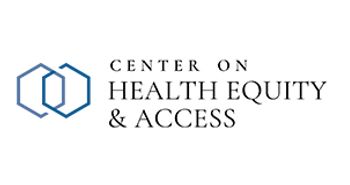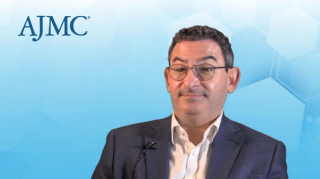
Health Care Delivery
Latest News

Latest Videos
CME Content
More News

Clinicians treating a higher percentage of patients insured by Medicaid and patients younger than 5 years were more likely to apply fluoride varnish.

The 2025 Physician Fee Schedule includes a conversion factor reduction, expanded behavioral health services, extended telehealth waivers, new Quality Payment Program pathways, and measures to address suspect billing, alongside a Biden administration initiative introducing federal maternal health standards for hospitals.

Today, the Siftwell 2024 Medicaid-Eligible Health Equity Index report highlighted ongoing challenges and barriers that underscore the need for systemic changes to improve health care access and outcomes for vulnerable groups.

On this episode of Managed Care Cast, we're talking with the chief medical officer of CVS Health about recent pharmaceutical innovations, patient-provider relationships, and strategies to reduce drug costs.

A post-hoc analysis showed that zanubrutinib resulted in fewer adverse events compared with ibrutinib.

Rachel Dalthorp, MD, explains that zuranolone is recommended as the first-line medication, alongside psychotherapy, to effectively manage postpartum depression (PPD) and mitigate long-term impacts.

While there have been advances in screening technology, it is crucial to continue investing in emerging modalities and to ensure these advancements translate to clinical practice.

Despite extensive research into patient-level differences in antidepressant treatment outcomes, the variability among clinicians themselves hasn’t been thoroughly evaluated.

CMS recently launched a voluntary, nationwide dementia care program; the number of physicians who reported at least 1 symptom of burnout has dropped below 50% for the first time since the onset of the COVID-19 pandemic; diabetes drugs have all been in short supply over the last 18 months, partly due to people using them off label for weight loss.

Patients were satisfied with receiving their lung cancer screening (LCS) pulmonary nodule results via letter and considered the amount of information provided in the letter appropriate.

A quality improvement program found that maternal blood pressure (BP) screening during early well-child visits significantly improves the early detection and management of postpartum hypertensive disorders.

Researchers collected feedback from 20 clinicians implementing a telehealth serious illness conversation (SIC) with their patients with acute myeloid leukemia (AML) and myelodysplastic syndrome (MDS).

Kim Zynn, vice president of UPMC Health Plan's provider network and development relations team, shares how physicians can become LGBTQIA+ affirming providers, which is designated within the health plan.

This new analysis incorporated 1997-2013 data on patients with a history of surgical resection of stage IIIA-N2 non-small cell lung cancer (NSCLC) and their postop complications to evaluate the possibility of better identifying future surgical candidates.

Medicare Advantage members referred to home health after acute hospitalization who did not receive home health services had higher mortality at 30, 90, and 180 days.

More patients achieve significant weight loss with tirzepatide; new data show significant increases in sexually transmitted disease (STD) diagnoses; many individuals in cardiology deserts are left at higher risk of dying from heart disease.

Mark Bleackley, PhD, chief scientific officer, Incannex, details the progress of the ongoing RePOSA trial, which is assessing the safety and efficacy of IHL-42X in patients with obstructive sleep apnea (OSA).

In this new analysis, investigators review the late adverse events associated with anti-CD19 chimeric antigen receptor (CAR) T-cell therapy for relapsed/refractory B-cell non-Hodgkin lymphoma.

The interim results of a single-arm trial in children with autosomal recessive deafness 9 (DFNB9) show the benefits of binaural administration of gene therapy: better hearing with no serious adverse effects.

To conclude our interview with him, Ravin Ratan, MD, MEd, of MD Anderson, explains the importance of caring for all patients and why he tries to own the process of patients feeling confident that they received the attention they deserve.

AJMC's Center on Health Equity & Access shares new developments in HIV treatment, gynecological and multidisciplinary cancer care, and health care barriers faced by older Americans.

Low-value service utilization is common among all older adults, and utilization of some high-value services decreases after the onset of cognitive decline.

In our ongoing interview with Jessica K. Paulus, ScD, Ontada, she explains potential drivers behind changing trends in care for lung cancer that may have been influenced by the COVID-19 pandemic.

Investigators compared cost-effectiveness of the KRAS inhibitor sotorasib against the taxane docetaxel in the second line for non–small cell lung cancer (NSCLC).

Crystal S. Denlinger, MD, FACP, CEO of the National Comprehensive Cancer Network, breaks down the causes of the ongoing cancer drug shortage, as well as its impact on clinical trials.




















































